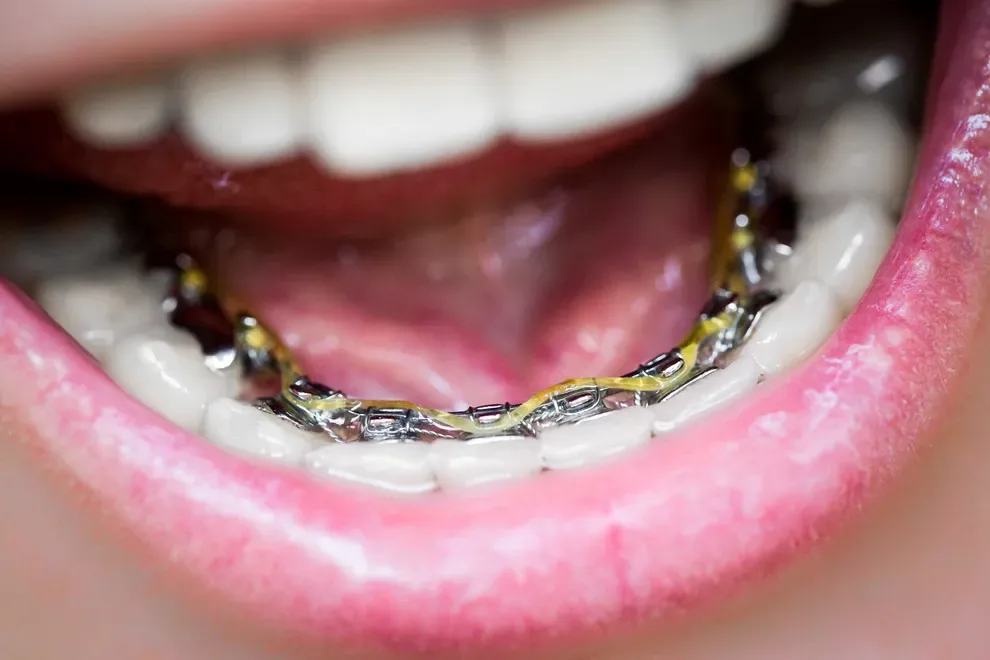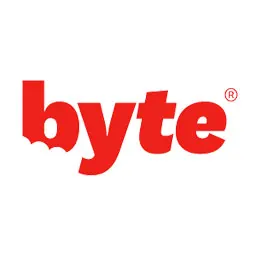Lingual Braces: Efficacy, Cost & Comparisons

Table of Contents
- Pros & Cons
- Barriers
- Am I a Candidate?
- Lingual Braces Might Work for You
- Alternatives
Lingual braces are similar to traditional braces, including the metal brackets and wires involved, but the entire system sits on the inside of your teeth rather than the outside. This means they are practically invisible to other people.
Lingual braces don’t work for everyone. They are only good for certain candidates, just like most orthodontic devices.
The Ups & Downs of Lingual Braces
Lingual braces can be a highly effective option to realign your smile. Many adults ask about this option because they do not want their orthodontic treatment to be visible, they play a woodwind or brass instrument, or they play sports. Lingual braces are a better option for these hobbies and professions.
More importantly, lingual braces are permanent. They remain on your teeth until your dentist removes them, which means you cannot forget to put them in or lose them as you might with clear, plastic aligners.
For people with very crowded teeth or some types of crossbite or overbites, braces are a more effective treatment than clear aligners. And your dentist has more control over how tight the braces are at the end of each checkup, allowing them to control your treatment plan more effectively.
There are some downsides to lingual braces. These are some of them:
Traditional braces can be painful and tight, and lingual braces are similar. Since lingual braces sit inside your teeth, they can scrape your tongue.You may also develop a lisp after you first have them placed, and it’ll take some time to get used to speaking with them in your mouth. Some people report that lingual braces are more painful than traditional braces.
While lingual braces may be more effective in treating moderate or severe malocclusions or misalignments, they are still not as effective as traditional braces.
Traditional braces are infamous for requiring consistent care and a restricted diet, but lingual braces can require even more care. You will not be able to eat the same things you could eat with traditional braces, and you must be more attentive to how well you clean the backs of your teeth.
A survey of 49 studies on lingual braces found that there was more plaque accumulation and gingivitis than with clear, plastic aligners or some other types of orthodontic devices.
Lingual braces require specialized training to place them, so they can be more expensive than traditional braces or many types of clear, plastic aligners. However, they are about the same price as ceramic braces or long-term treatment with some brands of clear, plastic aligners.
In comparison to traditional braces and clear aligners, lingual braces are not very common, and demand for them is declining.
Availability, Time & Cost Might Be Barriers
Aside from appearance, some of the biggest concerns for adults considering their dental alignment options are cost, length of treatment time, and availability. Lingual braces may be practically invisible, but they are not the best option when considering some other factors.
You will likely wear lingual braces for between one and two years, which is similar to the timeframe for traditional braces or ceramic braces. A treatment timeline with clear, plastic aligners can be similar for those with intensive treatment needs.
Unlike with clear aligners, you will need to restrict your diet and take extra care of your lingual braces.
Lingual braces are one of the more expensive orthodontics options, as they cost between $8,000 and $10,000 before insurance.Invisalign is the most expensive clear aligner option, with price tags ranging from $3,00 to $8,000 before insurance.
Your orthodontist may not have the necessary training to apply lingual braces, so they may discuss other options with you, including clear, plastic aligners and traditional braces. Even if you are interested in lingual braces, it may be difficult to find a specialist who can apply them correctly.
Still, if you want an invisible option but have greater orthodontic needs that clear aligners are less suited for, lingual braces may be a good option.
Who is a Candidate for Lingual Braces?
Because they are virtually unnoticeable throughout treatment, lingual braces are most likely to be considered by someone who is concerned about their appearance and wants their orthodontic device to be almost undetectable.
You may also be a candidate for lingual braces if you fit the following criteria:
You’re okay with a longer adjustment period and working through possible speech and eating problems. Because lingual braces are placed on the back of your teeth, and closer to your tongue, they may interfere more with chewing and talking before you get used to them. It may take a few weeks before these daily activities feel more normal.
You’re willing to put more effort into daily oral hygiene. In order to avoid staining and decay, it’s important for anyone with braces to be diligent about keeping up with their oral care. This can be especially time-consuming with lingual braces, which require cleaning the area behind the teeth, where the braces are placed.
Money isn’t a concern. Although dental prices vary, lingual braces can cost twice as much as traditional metal braces. Fittings and adjustments can take longer too, which can also add to the price tag. Most insurance companies won’t cover the full expense.
You’re patient. The process for being fit for lingual braces, and having them put on, can take longer than with some other types of braces. Treatment may take longer in some cases.
You’re willing to search out the right dentist. Lingual braces aren’t as popular or readily available as many other orthodontic options. Finding a dentist who offers them and is experienced in treating patients with them may require some research and possibly some travel.
Lingual Braces Might Work Well for You
Lingual braces may be a good option for many adults seeking orthodontic treatment, and they can work for some teenagers. They are not a good orthodontic option for children or younger adolescents, whose teeth may be too small to manage this approach.
Although they are more expensive than many orthodontic devices, lingual braces can still be partially covered by insurance if your dentist diagnoses the orthodontic work as necessary.
The time commitment is about the same as other intensive types of dental alignment, and you have the benefit of seeing your dentist every few weeks or months for adjustments and to check that the braces are clean.
In-person exams can reduce the risk of different types of misalignment and ensure your teeth are healthy. Your dentist will also be able to adjust your treatment plan if necessary.
While many adults opt for clear, plastic aligners for ease, you may find you prefer the appearance, or lack thereof, of lingual braces.
Alternatives to Lingual Braces
For some people, the “cons” of lingual braces — including the cost, care, and potential discomfort — outweigh the benefits. Those seeking another option may consider the following:
Metal Braces
Metal braces are also known as traditional braces, and they use metallic wires and attachments to achieve a great smile and bite after treatment. With a price tag of around $3,000 to $7,000, they are the most affordable braces option, but also the most noticeable throughout treatment.For some complex or severe orthodontic issues, metal braces may be the only option available. Metal braces can also be customized with fun colorful bands.
Ceramic Braces
Ceramic braces use the same bracket-and-band design as traditional metal braces, but instead of metallic attachments, clear or tooth-colored brackets and/or wires blend more into the teeth. They’re slightly more expensive than metal braces and usually cost around $4,000 to $8,000.
Clear Braces
Clear braces, like Invisalign or other brands, use a clear material to form braces around the teeth. As with other types of braces, permanent clear braces are customized to your bite and fitted accordingly to shift teeth into place.Because of their clear appearance, these braces are another top choice for people looking for a less noticeable alternative to metal braces. However, clear braces are more expensive than traditional braces. They usually cost around $3,500 to $8,000. They’re also not suitable to correct every orthodontic issue.
Clear Aligners
Clear aligners are custom-made, clear, removable devices that fit over your teeth and guide them into correct positions.
When you go with a clear aligner treatment, you start the process by having an initial scan (or at-home impression kit) completed to analyze your current bite and where your teeth need to move in order to achieve your optimal smile. Then, a series of clear teeth aligners is created.You’ll wear each set for a period (usually about two weeks) before moving on to the next, as your teeth are gradually shifted into their ideal positions.
Clear aligners are more affordable than braces, with costs ranging from around $1,800 to $2,500. Treatment is usually complete within four to six months.
While braces require multiple in-office visits and adjustments, the process for many clear aligner sets can be completed entirely from home as progress is monitored by a dentist virtually.
The convenience and accessibility of clear aligners have made them increasingly popular, but they’re not for everyone. Because aligners are removable, they require commitment from the user. They won’t work if you don’t wear them.
Also, clear aligners may not be able to address severe orthodontic problems. An initial scan or at-home impression kit can determine if clear aligners will work for you. Some providers, like Byte, will refund the cost of the impression kit if you’re not able to proceed with treatment.
| Cost | Treatment time (approximate) | Pros | Cons | |
|---|---|---|---|---|
| Lingual braces | $8,000–$10,000 | 1–3 years | Attachments on back of teeth so braces aren't noticeable | Expensive; less available than other types of braces; may be less comfortable and harder to clean |
| Metal braces | $3,000–$7,000 | 1–3 years | Most affordable; can address even complicated orthodontic issues | Very noticeable; require continuous in-office adjustments |
| Ceramic braces | $4,000–$8,000 | 1–3 years | Less visible than metal braces; can address most orthodontic issues | More expensive than metal braces; require continuous in-office adjustments |
| Clear braces | $4,000–$7,500 | 1 year | Not noticeable; work more quickly than traditional braces | More expensive than other braces; require in-office visits |
| Clear aligners | $1,800–$2,500 | 4–6 months | Removable; more affordable; work more quickly than other options; can complete treatment entirely from home | Requires proper wear; may not be able to address severe orthodontic issues |
